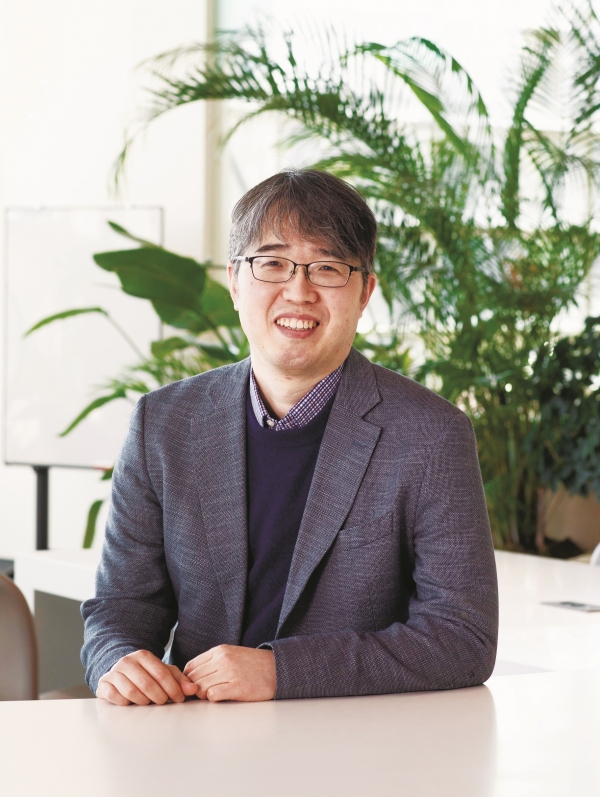
Son Heung-min's Bending Shot.
Even if you are not a big fan of soccer, you are likely to have heard about Son Heung-min, who won the Premier League Golden Boot award in the 2022/23 season. His bending shot is a masterpiece. At first glance, it may seem like the ball is going wide of the goalpost, but it exquisitely curves past the goalkeeper's hands and into the corner of the goalpost. The pressure differential in the air around a spinning ball and the resulting forces can be controlled by the direction and speed of the ball's spin, allowing for its curved trajectory in the air. Interpreting the ball as a point, as commonly taught in Physics 101 classes, makes it impossible to explain this beautiful motion of the ball.
Electron’s Bending Shot.
Most electronic devices we use are controlled by the flow of electrons. Semiconductor devices are also operated by applying a vertical electric field to gather electrons on the semiconductor’s surface, and subsequently by applying a horizontal electric field to facilitate the electrons to flow. Here, electrons are typically considered as electrically charged ‘points’ and make simple linear movements determined by the electric fields. Then, is it possible for electrons to perform bending shots? As we learned in Physics 102, an electron curves when Lorentz force is applied under a magnetic field. However, this is somewhat like hoping for the wind to blow just right to curve a ball after Son Heung-min kicks it. A genuine electron curve should occur autonomously, without the assistance of an external magnetic field.
Electron as a wave.
According to quantum mechanics, electrons must be considered as waves, not as simple points. Electrons inside a solid are then better described as a wave packet in which various waves from internal electrons of constituent atoms overlap. The position of the electron is the position in the wave packet with the largest amplitude, and thus, the greatest probability. When this position changes in response to the electric field, it is said that the electron moves inside the solid. Only the position might simply change due to the electric field, but sometimes the relative phases of the overlapping waves may also change. If this is the case, the waveform of the packet changes as well, which can be considered as a virtual rotation of the wave packet, similar to how a phase change in a wave can be likened to a virtual circular motion. Electrons, when regarded as bundles of waves rather than points, gain the capability to execute bending shots, a beautiful natural phenomenon.
So what?
The fundamental essence of electronic devices lies in controlling the flow of electrons. Could the bending shot of electrons potentially contribute to the advancement of current electronic technology? Yes. For instance, using electron bending shots can effectively control the spin while greatly reducing the heating problem in the existing semiconductor technology, or it can efficiently convert waste heat into electricity in a thermoelectric device with a much simpler structure than existing technologies. A more ambitious plan is to use the topological state of electrons, the cause of electron bending, to transmit information without consuming any power. It is natural for scientists to be enthusiastic about the fact that electron bending shots are possible in solids along with their practical applications.
Topological electronic state.
The principle of the electronic bending kick is even more beautiful. The electronic state in a solid has a different energy-momentum relationship depending on the characteristics of the atoms or orbitals, known as an electronic band. The way these electronic bands are arranged is called the electronic structure of a solid, and for some cases, these electronic bands meet and intersect. Taking it a step further, we can think of the topology of electronic structure where multiple electronic bands intersect and twist, and materials in which these states could be implemented are called topological materials. If created from the superposition of these twisted electron bands, a wave packet can move and rotate, resulting in a bending shot of the electron. Just as Son Heung-min is a player proficient at bending shot, the material that is good at electron’s bending shot is a topological material.
Topological materials, new quantum materials.
Topological materials are a new type of quantum material. The main difference from other quantum materials is that the physical properties of topological materials can be predicted by examining their electronic structure. Thanks to the rapidly developing computational methods in physics, recent electronic structure calculations on hundreds of thousands of inorganic compounds have revealed that many of them are topological material candidates, providing new opportunities to study and utilize the quantum mechanical properties of electrons. Now, it is possible to computationally design materials on demand, which guides research in material synthesis, property measurements and device fabrications. The feedback loop between diverse disciplines—theory and experiment, synthesis and measurement, fundamental understanding and practical application—has become more essential than ever. This new ‘predictable’ class of quantum materials calls for a fresh approach to research.
New attitude for topological materials research.
As topological material research has somewhat changed the landscape of quantum materials, I feel that the skills required for the researchers have also changed. Communication and collaboration - which have always been important though - are particularly essential in topological materials research. How well researchers with different expertise can communicate and collaborate has become the most important measure of success in topological materials research. If someone wants to make a ground-breaking discovery in the field of topological materials, they should ask themselves whether they are prepared to collaborate with colleagues from diverse fields, help them, and think together.


